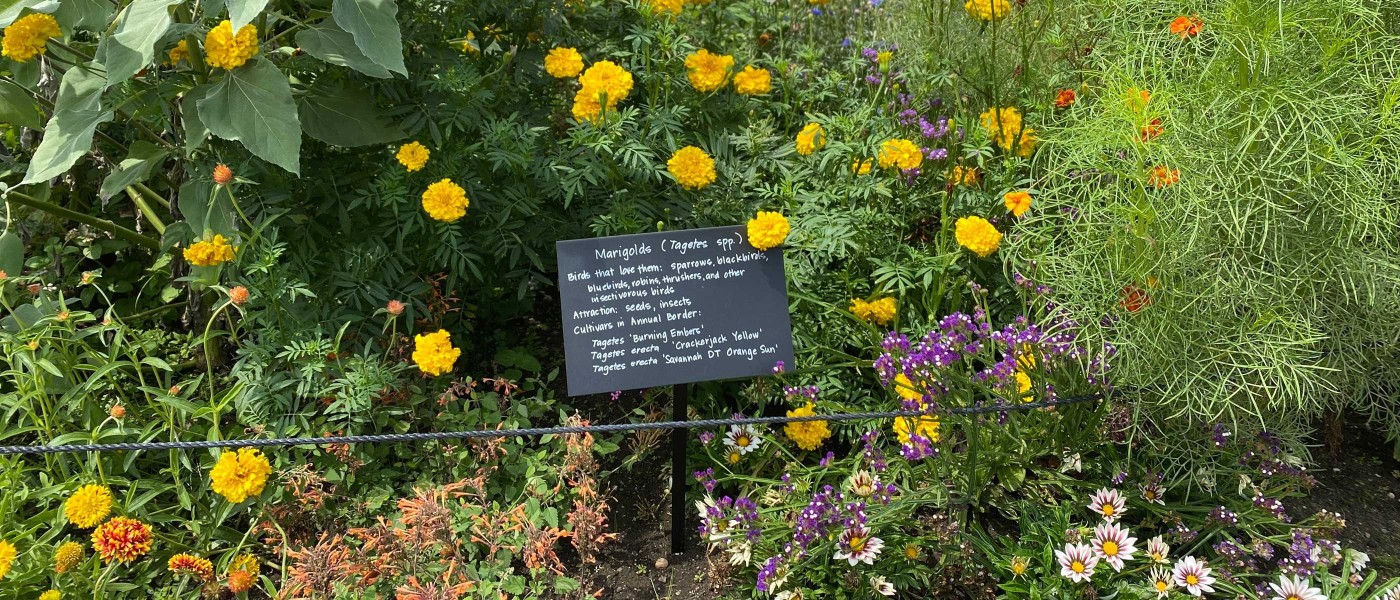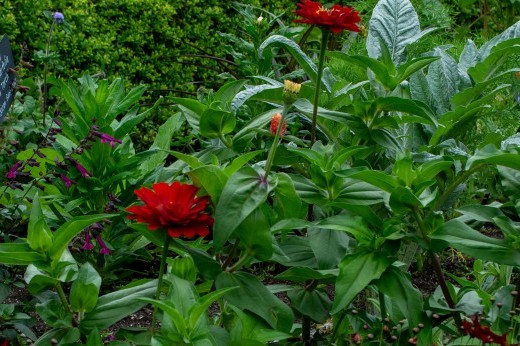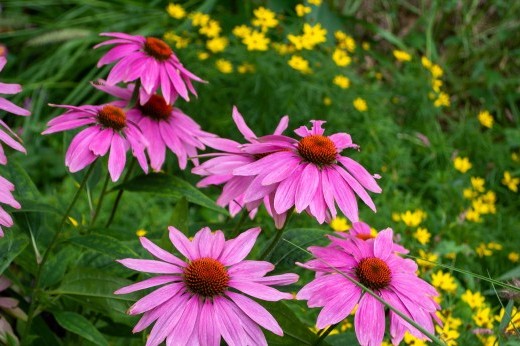The Annual Border just doesn’t slow down. Right now it continues to grow lush with colorful and textural blooms that give the display an airy, undulating effect. New signage has also been added by the Garden’s Interpretation team, with chalkboard signs posted through the beds highlighting plants that birds love.
Towering sunflower ‘Mammoth’, planted along the back of the border, provides both seeds and insects for birds—especially loved by migratory birds like black-capped chickadees, downy woodpeckers, and northern cardinals. Gardener Wayken Shaw, who curates the Annual Border, has also direct-sowed seeds from these single-blooming sunflowers, in hopes of a second bloom this season. Other plants highlighted in the new signage are marigolds, cosmos, and nectar-rich begonias that attract hummingbirds.
Even with the profusion of blooms on display, Shaw also considered the reality that not all annuals have long bloom seasons, especially cosmos and cornflower that tend to fade as the summer heat builds up, or zinnias, which are prone to powdery mildew. So he paired these cooler-weather annuals with warm-weather annuals, like salvia and marigolds.
Inspired by the sense of movement in the Shakespeare Garden, curated by gardener Jennifer Williams, Shaw sought to reflect a similar dynamism and whimsy in the Annual Border plantings. It’s a modern take on English cottage-style gardens, but with the inclusion of atypical plants like sorghum and amaranth. In a way, Shaw notes, this cottage-style garden has become “less for the people, and more for the wildlife.”
Within the Annual Border, Shaw has also left room for happenstance. Though the planting design was meticulous, he’s allowed plants that seeded from past plantings to grow and fill in any gaps. “It’s a huge seedbank of Annual Borders past,” says Shaw.
These unplanned volunteer plants can be seen throughout the border. Clusters of flowering tobacco, like Nicotiana ‘Chartreuse,’ are volunteers—or perhaps opportunists—that can be found in front of a swathe of Sunflower ‘Gold and Silver’. Cleome hirta (spider flower) pops up here and there. You can also spot a few daturas, with their large white flowers that resemble the horn of a gramophone. And if you look closely, you might find a small Spilanthes (toothache plant) making space for itself in front of a cluster of zinnias.
So the next time you explore the Garden, take notice of all that the Annual Border provides—for the birds and insects, but also the beauty in serendipity, and the ways in which an idea sown by one gardener can be the inspiration for another.










